|
|
 |
Gerard de Lairesse
|
|
Gerard or Gerard de Lairesse (11 September 1640 or 1641 - June 1711) was a Dutch Golden Age painter and art theorist.
Lairesse was born in Liege. His broad range of talent included music, poetry, and the theatre. He was perhaps the most celebrated Dutch painter in the period following the death of Rembrandt. His treatises on painting and drawing, Grondlegginge der teekenkonst (1701) and Groot Schilderboek (1707), were highly influential on 18th-Century painters like Jacob de Wit. Students of De Lairesse included the painter Jan van Mieris. He died in Amsterdam. |
|
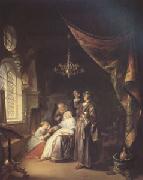 |
Gerard Dou
|
|
Leiden 1613-1675
was a Dutch Golden Age painter, whose small, highly-polished paintings are typical of the Leiden fijnschilders. He specialised in genre scenes and is noted for his trompe l'oeil "niche" paintings and candlelit night-scenes with strong chiaroscuro. His first instructor in drawing and design was Bartholomew Dolendo, an engraver; and he afterwards learned the art of glass-painting under Peter Kouwhoorn. At the age of 15 he became a pupil of Rembrandt, with whom he continued for three years. From the great master of the Dutch school he acquired his skill in coloring, and in the more subtle effects of chiaroscuro; and the style of Rembrandt is reflected in several of his earlier pictures, notably in a portrait of himself at the age of 22, in the Bridge-water House gallery, and in the "Blind Tobit going to meet his Son", at Wardour Castle. At a comparatively early point in his career, however, he had formed a manner of his own distinct from, and indeed in some respects antagonistic to, that of his master. Gifted with unusual clearness of vision and precision of manipulation, he cultivated a minute and elaborate style of treatment; and probably few painters ever spent more time and pains on all the details of their pictures down to the most trivial. He is said to have spent five days in painting a hand; and his work was so fine that he found it necessary to manufacture his own brushes. Notwithstanding the minuteness of his touch, however, the general effect was harmonious and free from stiffness, and his color was always admirably fresh and transparent. He was fond of representing subjects in lantern or candle light, the effects of which he reproduced with a fidelity and skill which no other master has equaled. He frequently painted by the aid of a concave mirror, and to obtain exactness looked at his subject through a frame crossed with squares of silk thread. His practice as a portrait painter, which was at first considerable, gradually declined, sitters being unwilling to give him the time that he deemed necessary. His pictures were always small in size, and represented chiefly subjects in still life. Upwards of 200 are attributed to him, and specimens are to be found in most of the great public collections of Europe. His chef-d'oeuvre is generally considered to be The dropsical woman, 1663, and The Dutch Housewife, 1650, both in the Louvre. The Evening School, in the Amsterdam Rijksmuseum, is the best example of the candlelight scenes in which he excelled. In the National Gallery, London, favorable specimens are to be seen in the Poulterer's Shop, |
|
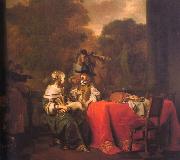 |
Gerbrand van den Eeckhout
|
|
1621-1674
Dutch
Gerbrand van den Eeckhout Location
Dutch painter, draughtsman and etcher. He was the son of the goldsmith Jan Pietersz. van den Eeckhout and a great friend as well as a pupil of Rembrandt, according to Houbraken, who commented that van den Eeckhout painted in the style of his master throughout his career. This is certainly true of van den Eeckhout (biblical) history paintings, but less so of either his portraits, which gradually displayed more Flemish elegance, or his genre pieces (from 1650), in which he followed various trends; he adapted his style to suit his subject with sensitive versatility. He was also a gifted colourist and an artist of great imagination, superior in both these respects to such better-known Rembrandt pupils as Ferdinand Bol and Nicolaes Maes. Moreover, he was extremely productive, and there is at least one dated painting for virtually every year between 1641 and 1674. In addition, he created a large body of drawings comprising histories, figures, landscapes and genre scenes executed in various media, including watercolour. He also made several etchings, mostly studies of heads, such as the Self-portrait (1646; B. 66). He died a bachelor, aged 53. |
|
|
|
|
|
|
|
|
|
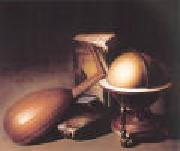 |
Gerrit Dou
|
|
1613-1675
Dutch
Gerard Dou Locations
Dutch genre and portrait painter of Leiden. The son of a glass painter, he was apprenticed to an engraver and worked from 1628 to 1631 in the studio of the young Rembrandt. Although he occasionally borrowed Rembrandt themes, he was more detailed and meticulous in his execution. His scenes of domestic, middle-class life were tremendously popular and often imitated. Among his most famous works are Evening Light (Rijks Mus.), Young Man (The Hague), The Cook (Louvre), and a self-portrait (Metropolitan Mus.). |
|
|
|
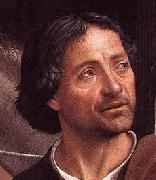 |
GHIRLANDAIO, Domenico
|
|
Italian Early Renaissance Painter, 1449-1494
Florentine painter, whose family name was Bigordi. He may have studied painting and mosaics under Alesso Baldovinetti. Ghirlandaio was an excellent technician. Keenly observant of the contemporary scene, he depicted many prominent Florentine personalities within his religious narrative paintings. Among his earliest frescoes are the Madonna with the Vespucci Family and the Last Supper (Church of the Ognissanti, Florence). He painted scenes from the life of Santa Fina (collegiate church in San Gimigniano) and frescoes in the Palazzo Vecchio, Florence. In 1481, Pope Sixtus IV called him to Rome, along with Botticelli, to decorate the Sistine Chapel. He painted the Calling of the First Apostles, a scene close in spirit to Masaccio. He returned to Florence to work on the frescoes in the Sassetti Chapel in Santa Trinita. He introduced Sassetti, Corsi, Poliziano, the Medici, and many other contemporaries as participants in the life of St. Francis. Ghirlandaio's most famous achievement is his fresco cycle of the life of Mary and St. John the Baptist for the choir of Santa Maria Novella. Michelangelo served an apprenticeship with him at this time and probably worked on these frescoes. Other examples of his art are the Adoration of the Magi (Uffizi); another Adoration (Hospital of the Innocents); a mosaic of the Annunciation for the Cathedral; a portrait of Francesco Sassetti and his son (Metropolitan Mus.);
|
|
|
|
|
|
 |
Giacomo Di Chirico
|
|
Giacomo Di Chirico (25 January 1844 - 26 December 1883) was an italian painter. Together with Domenico Morelli and Filippo Palizzi, he was one of the most elite Neapolitan artists of the 19th century. He received the official title eKnight of Italye from King Victor Emmanuel II.
|
|
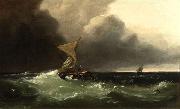 |
Gideon Jacques Denny
|
|
(1830-1886) was a marine artist who was born in Wilmington, Delaware on July 15, 1830. As a young man, he worked on ships in the Chesapeake Bay. He traveled to California in 1849 with the Gold Rush. He worked as a teamster on the San Francisco docks and was a member of the San Francisco Committee of Vigilance. After two years in California, he moved to Milwaukee, where he studied painting with Samuel Marsden Brookes. After six years of study in Milwaukee, Denny returned to San Francisco and established a studio on Bush Street. In 1862, Brooks moved to San Francisco and shared a studio with Denny. In 1868, Denny spent two months in Hawaii visiting several islands. He is also known to have visited Canada and South America. Denny died of malaria in Cambria, California on Oct. 7, 1886.
The Berkeley Art Museum and Pacific Film Archive, the Bishop Museum (Honolulu), the Crocker Art Museum (Sacramento, California), the Fine Arts Museums of San Francisco, Monterey Peninsula Museum of Art, and the Oakland Museum of California are among the public collections holding works by Gideon Jacques Denny.
|
|
 |
GIOTTO di Bondone
|
|
Italian Early Renaissance Painter, 1267-1337
Italian painter and designer. In his own time and place he had an unrivalled reputation as the best painter and as an innovator, superior to all his predecessors, and he became the first post-Classical artist whose fame extended beyond his lifetime and native city. This was partly the consequence of the rich literary culture of two of the cities where he worked, Padua and Florence. Writing on art in Florence was pioneered by gifted authors and, although not quite art criticism, it involved the comparison of local artists in terms of quality. The most famous single appreciation is found in Dante's verses (Purgatory x) of 1315 or earlier. Exemplifying the transience of fame, first with poets and manuscript illuminators, Dante then remarked that the fame of Cimabue, who had supposed himself to be the leader in painting, had now been displaced by Giotto. Ironically, this text was one factor that forestalled the similar eclipse of Giotto's fame, which was clearly implied by the poet. |
|
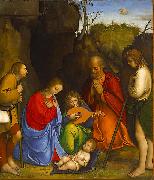 |
Giovanni Agostino da Lodi
|
|
was an Italian painter who was active from c. 1495 to c. 1525.
The attribution of his works has been dubious for centuries, until his style and career was defined by the American art historian Bernard Berenson in the 1960s. One of his first identified work is the Pala dei Barcaioli ("Boatmen Altarpiece") in the church of San Pietro Martire at Murano. His only signed work is the St. Peter and St. John the Evangelist in the Pinacoteca di Brera, which shows Lombard influeces, such as that of Bramantino.
Later he was also influenced by Leonardo da Vinci's style, as visible in the Christ Washing the Feet of the Apostles in the Gallerie dell'Accademia of Venice. After moving to Venice in the wake of Ludovico Sforza's fall, he returned to Milan in 1506. He subsequently executed works for privates and for the Certosa di Pavia; one of his late works, the Calvary, is housed in the National Gallery in Prague. He also collaborated with Marco d'Oggiono for a polyptych in the church of Santa Maria della Pace in Milan, some panels of which are now in the Pinacoteca di Brera.
|
|
|
|
|
|
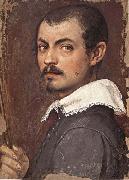 |
Giovanni da san giovanni
|
|
1592-1636
Italian painter and draughtman. He was the most distinguished of the artists working in fresco in 17th-century Florence. An eccentric personality, he was attracted by the charm and informality of northern art and by a satirical approach to Classical themes. He went to Florence in 1608 to study in the workshop of Matteo Rosselli, where he learnt both fresco and oil painting techniques and drew extensively (Baldinucci). In 1615 he painted two ceiling canvases of Putti Supporting the Impresa of Michelangelo for a room in the Casa Buonarroti and in the same period frescoed the dome of the church of the Ognissanti, Florence (completed 1615), with a choir of musician angels. He also painted five lunettes showing scenes from the Life of St Francis in the cloister (completed 1619; in situ). In 1616 his frescoed decoration of an Allegory of Florence (destr.; preparatory drawing, Florence, Uffizi, G.D.S. U. 1122F) on the fa?ade of Cosimo II de' Medici's house in Piazza della Calza won him unexpected and lasting fame. His early works also included several tabernacles, made for patrons in the town and in the surrounding countryside. The Virgin and Child with Saints |
|
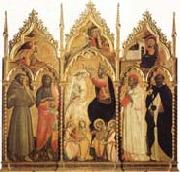 |
Giovanni dal ponte
|
|
Italian Painter, 1385-1437
He was reputed to have been a student of Spinello Aretino. He acquired the name dal Ponte due to the location of his studio at Santo Stefano a Ponte, Florence. He joined the Arte dei Medici e degli Speziali in 1410 and the Compagnia di S Luca in 1413. Outstanding debts brought him a prison sentence in 1424, but he still owed money to a carpenter three years later. By the late 1420s he had opened his own studio and formed a partnership with the painter Smeraldo di Giovanni (c. 1365-after 1442). Giovanni dal Ponte's varied and prolific production, which continued until his death, included fresco cycles, panels and the decoration of small objects. A number of allegorical panel paintings and cassoni are attributed to him. The animated, stylized figures in the Seven Liberal Arts (1435; Madrid, Prado) are shown in a garden dotted with naturalistic flowers and plants. His early work shows the impact of the Late Gothic style. |
|
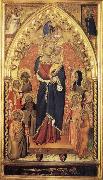 |
Giovanni del Biondo
|
|
Italian Gothic Era Painter, active 1356-1399,was a 14th century Italian painter of the Gothic and early-Renaissance period, active 1356-1399. |
|
|
|
|
|
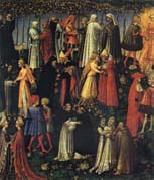 |
Giovanni di Paolo
|
|
Italian Early Renaissance Painter, ca.1403-1483,major Italian painter of the Sienese school. Typical of the Sienese painters of his era, he paid scant attention to the artistic innovations made in nearby Florence, but often depended on the style established by the Sienese masters of the 14th cent. Fortunately, Giovanni di Paolo was endowed with great imagination. His first dated work (1426) was the Pecci altarpiece (major panels in Siena; predella panels in the Walters Art Gall., Baltimore). He produced a tremendous number of works during his long career. Many paintings have remained in Siena, but there are probably more examples of his art in the United States. The Metropolitan Museum has several of his paintings; among them is a delightful scene of Paradise; in the Philip Lehman collection is the exquisite Creation of the World. The Madonna and Child in a Landscape (Mus. of Fine Arts, Boston) exemplifies his inclination toward pure fantasy and disregard for the laws of perspective. Giovanni di Paolo is best represented by six highly expressive scenes from the life of St. John the Baptist (Art Inst., Chicago). |
|
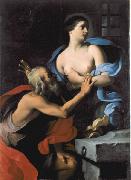 |
Giovanni Domenico Cerrini
|
|
(1609-1681), also called Gian Domenico Cerrini or il Cavalier Perugino, was an Italian painter of the Baroque period, active mainly in Rome and influenced in large part by painter of the Bolognese School.
Born in Perugia, Cerrini initially apprenticed under Giovanni Antonio Scaramuccia, then in 1638 moved into the Roman studio of Guido Reni, but strongly influenced by Lanfranco, Guercino, Domenichino, and Andrea Sacchi. He was patronized by the family of Cardinal Bernardino Spada. Cardinal Giulio Rospigliosi gave him the commission to decorate the cupola of Santa Maria della Vittoria (1654-5). His style has the monumental clarity of Domenichino, but somewhat sapped of vitality.
Paintings of his can be found in many of the churches of Rome, where he died, including Santa Maria in Traspontina, San Carlino alle Quattro Fontane, Chiesa Nuova, San Carlo ai Catinari, Santissimo Sudario dei Piemontesi, Sant??Isidoro, as well as in Galleria Colonna, Palazzo Spada, and the Palazzo Corsini art gallery. |
|
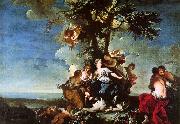 |
Giovanni Domenico Ferretti
|
|
1692-1768 Italian Giovanni Domenico Ferretti Location Italian painter. He was the son of the goldsmith Antonio di Giovanni da Imola and Margherita di Domenico Gori. His mother family, which included her brother, the antiquarian ANTONIO FRANCESCO GORI, was extremely influential in Florence and proved very important for Ferretti. In the first years of his life he lived in Imola, where he was sent to study (1708) with the local painter Francesco Chiusuri. After the family moved to Florence, Ferretti was taught there by Tommaso Redi and Sebastiano Galeotti. Later he spent five years in Bologna, an important centre for the practice and teaching of academic painting, where, in the workshop of Felice Torelli, his work acquired its characteristic style. |
|
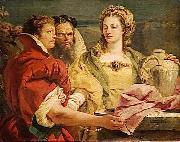 |
Giovanni Domenico Tiepolo
|
|
(August 30, 1727 - March 3, 1804) was a Venetian painter and printmaker in etching. He was the son of artist Giovanni Battista Tiepolo and elder brother of Lorenzo Baldissera Tiepolo..
Domenico was born in Venice, studied under his father, and by the age of 13 was the chief assistant to him. He was one of the many assistants, including Lorenzo, that transferred the designs of his father (executed in the 'oil sketch' invented by the same). By the age of 20, he was producing his own work for commissioners.
He assisted his father in Werzburg 1751-3, decorating the famous stairwell fresco, in Vicenza at the Villa Valmarana in 1757, and in Madrid at the palace of Charles III from 1762-70.
|
|
 |
Girolamo da Carpi
|
|
(1501-1556) was an Italian painter and decorator who worked at the Court of the House of Este in Ferrara. He began painting in Ferrara, by report apprenticing to Benvenuto Tisi (il Garofalo); but by age 20, he had moved to Bologna, and is considered a figure of Early Renaissance painting of the local Bolognese School.
He trained in the studio of a local painter who showed the influence of Lorenzo Costa and Raphael. In the 1520s Girolamo visited Rome and Bologna and was inspired by the Mannerist style of Giulio Romano. Geographically and stylistically he straddles the various influences.
He returned to Ferrara and collaborated with Dosso Dossi and Garofalo among others on commissions for the d'Este family. Girolamo became the architect to Pope Julius III in 1550 and supervised the remodeling of the Vatican's belvedere. Returning to Ferrara, he was charged of the enlargements of the Castello Estense.
Da Carpi's paintings include a Descent of the Holy Spirit, in the church of St Francis at Rovigo; a Madonna, an Adoration of the Magi, and a St. Catharine at Bologna; and the St. George and the St. Jerome at Ferrara.
|
|
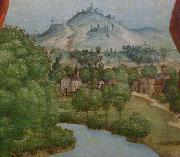 |
Girolamo dai Libri
|
|
(1474/1475 - July 2, 1555) was an Italian illuminator of manuscripts and painter of altarpieces, working in an early-Renaissance style.
He was born and mainly active in Verona. His father was Francesco dai Libri, and was so named because he was an illuminator of books. Girolamo's works were noted by Giorgio Vasari. Girolamo was a pupil of Domenico Morone. Dai Libri painted his first altarpiece, a Deposition from the Cross for Santa Maria in Organo in Verona, at the age of sixteen.
|
|
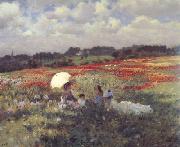 |
Giuseppe de nittis
|
|
Italian, 1846-1884
Italian painter, pastellist and printmaker. Throughout his career he was committed to a plein-air aesthetic and was particularly interested in rendering varying light effects, a concern that brought him into contact with the Impressionists. He was also acquainted with the members of the Macchiaioli, for whom his work was influential. In addition to oils, he experimented with printmaking and made innovative use of pastels. Practising a restrained, and therefore 'acceptable', form of Impressionism, |
|
|
|
 |
GIUSTO de Menabuoi
|
|
Italian painter, Florentine school (b. ca. 1320, Firenze, d. 1391,
Italian painter, Florentine school (b. ca. 1320, Firenze, d. 1391, was an Italian painter of the early Renaissance. He was born in Florence. In Lombardy he executed a fresco of the Last Judgement in the Abbey of Viboldone, Milan. He then moved to Padua where he completed frescos in the Church of the Eremitani, the Basilica of Saint Anthony of Padua and most notably, the Baptistery of the Duomo (1376). |
|
|
|
|
|
|
|
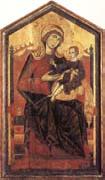 |
Guido da Siena
|
|
Italian Byzantine Style Painter, 13th Century
He may have made significant advances in the techniques of painting, much as Cimabue much later accomplished. However, there is some debate about this. Guido is primarily known for a painting which is now split into several pieces. The church of S. Domenico in Siena contains a large painting of the Virgin and Child Enthroned with six angels above. The Benedictine convent of the same city has a triangular pinnacle representing the Saviour in benediction, with two angels. This was once a portion of the same composition, which was originally a triptych. The principal section of this picture has a rhymed Latin inscription, giving the painter's name as Guido de Senis, with the date 1221. However, this may not be genuine, and the date may really read as 1281. There is nothing particular to distinguish this painting from other work of the same period except that the heads of the Virgin and Child are much superior ?C in natural character and graceful dignity ?C to anything painted before Cimabue. As a result, there is some dispute as to whether these heads are really the work of a man who painted in 1221, long before Cimabue. Crowe and Cavalcaselle have proposed that the heads were repainted in the 14th century, perhaps by Ugolino da Siena. If Crowe and Cavalcaselle are right, Cimabue maintains his claim to the advancement of the art. Beyond this, little is known of Guido da Siena. A picture in the Academy of Siena is attributed to him (a half-figure of the Virgin and Child, with two angels), which dates (probably) between 1250 and 1300. |
|
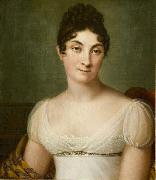 |
Guillaume Descamps
|
|
Guillaume-Desire-Joseph Descamps, a painter and engraver, was born at Lille in 1779. He was a pupil of Vincent, but, obtaining the "prix de Rome," he improved himself by travelling in Italy, and became court-painter of Murat in Naples. He died in Paris in 1858. The following paintings were executed by him:
The Women of Sparta (in the Lille Museum). 1808.
The Martyrdom of St. Andrew (in St. Andre, Lille).
Murat on board the Ceres distributing Rewards (engraved hy himself).
The Conversion of St. Augustine (in St. Eustache, Paris).
The Apotheosis of Cardinal Tommasi (in San Martino di Monti, Rome).
The Neapolitan Troops marching out against Capri. |
|
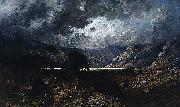 |
Gustave Dore
|
|
(French pronunciation: January 6, 1832 - January 23, 1883) was a French artist, engraver, illustrator and sculptor. Dore worked primarily with wood engraving and steel engraving.
Dore was born in Strasbourg and his first illustrated story was published at the age of fifteen. His skill had manifested itself even earlier, however. At age five he had been a prodigy troublemaker, playing pranks that were mature beyond his years. Seven years later, he began carving in cement. Subsequently, as a young man, he began work as a literary illustrator in Paris, winning commissions to depict scenes from books by Rabelais, Balzac, Milton and Dante.
In 1853, Dore was asked to illustrate the works of Lord Byron. This commission was followed by additional work for British publishers, including a new illustrated English Bible. A decade later, he illustrated a French edition of Cervantes's Don Quixote, and his depictions of the knight and his squire, Sancho Panza, have become so famous that they have influenced subsequent readers, artists, and stage and film directors' ideas of the physical "look" of the two characters. Dore also illustrated an oversized edition of Edgar Allan Poe's "The Raven", an endeavor that earned him 30,000 francs from publisher Harper & Brothers in 1883.
Dore's English Bible (1866) was a great success, and in 1867 Dore had a major exhibition of his work in London. This exhibition led to the foundation of the Dore Gallery in Covelant Bond Street. In 1869, Blanchard Jerrold, the son of Douglas William Jerrold, suggested that they work together to produce a comprehensive portrait of London. Jerrold had obtained the idea from The Microcosm of London produced by Rudolph Ackermann, William Pyne, and Thomas Rowlandson in 1808. Dore signed a five-year contract with the publishers Grant & Co that involved his staying in London for three months a year, and he received the vast sum of £10,000 a year for the project. Dore was mainly celebrated for his paintings in his day. His paintings remain world renowned, but his woodcuts and engravings, like those he did for Jerrold, are where he really excelled as an artist with an individual vision.
The completed book, London: A Pilgrimage, with 180 engravings, was published in 1872. It enjoyed commercial and socioeconomical success, but the work was disliked by many contemporary critics. Some of these critics were concerned with the fact that Dore appeared to focus on the poverty that existed in parts of London. Dore was accused by the Art Journal of "inventing rather than copying." The Westminster Review claimed that "Dore gives us sketches in which the commonest, the vulgarest external features are set down." The book was a financial success, however, and Dore received commissions from other British publishers. |
|
|
|
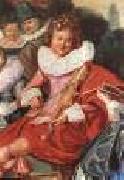 |
HALS, Dirck
|
|
Dutch painter (b. 1591, Haarlem, d. 1656, Haarlem).
Brother of Frans Hals. From 1618 to 1624 and again in 1640 he was an amateur of the Haarlem chamber of rhetoric known as De Wijngaertrancken, to which Frans also belonged. He was enrolled in the Guild of St Luke in Haarlem from 1627 to his death. As Blade has established on stylistic grounds, Dirck collaborated with the architectural painter Dirck van Delen from that year until 1634, with Hals painting the figures. On 4 April 1634 a lottery of paintings was announced, organized by Dirck Hals (who sent some of his own pictures) and Cornelis van Kittensteijn in the inn De Basterdpijp in Haarlem. The following year, on 20 June 1635, the notary van Leeuwen at Leiden authorized Dirck Hals to collect moneys for Pieter Jansz. van den Bosch of Leiden in connection with the proceeds of paintings sold at Haarlem. On 2 March 1643 Dirck Hals signed as a witness in the presence of the notary Willem van Vredenburch at Leiden. |
|
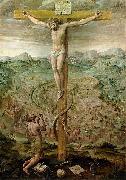 |
Hans Vredeman de Vries
|
|
(1527 - c. 1607) was a Dutch Renaissance architect, painter, and engineer. Vredeman de Vries is known for his publication in 1583 on garden design and his books with many examples on ornaments (1565) and perspective (1604).
Born in Leeuwarden and raised in Friesland, in 1546 Vredeman de Vries went to Amsterdam and Kampen. In 1549 he moved to Mechelen where the Superior Court was seating. Sebastian, his brother, was the organist in the local church. Vredeman de Vries designed ornaments for merry parades of Charles V and Philip II. Studying Vitruvius and Sebastiano Serlio, (translated by his teacher Pieter Coecke van Aelst), he became an internationally known specialist in perspective. He continued his career in Antwerp, where he was appointed city architect and fortification engineer. After 1585 he fled the city because of the Spanish occupation by Alessandro Farnese. Then the Protestants had to leave the city within two years. Vredeman de Vries moved to Frankfurt and worked in Wolfenbettel, designing a fortification and a new lay-out of the city for Julius, Duke of Brunswick-Leneburg. After his death the project was cancelled and Hans worked in Hamburg, Danzig (1592), Prague (1596) and Amsterdam (1600). On his trips Vredeman was accompanied by his son Paul and Hendrick Aerts.
Vredeman de Vries tried to get an appointment at the University of Leiden in 1604. It is not known when and where Hans Vredeman de Vries died, however, it is recorded that his son Paul was living in Hamburg when he inherited.
|
|
|
|
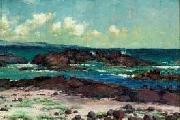 |
Helen Thomas Dranga
|
|
Helen Thomas Dranga (1866-1940), who is also known as Carrie Helen Dranga, was a painter who was born Carrie Helen Tufts in Oxford, England. She lived in Oakland, California from 1894 until 1900, when she moved to Hilo, Hawaii. Her paintings regularly appeared on the cover of Paradise of the Pacific magazine in the 1920s and 1930s. She lived in Hilo until shortly before her death in 1940.
The Honolulu Academy of Arts and the Lyman House Memorial Museum (Hilo, Hawaii) are among the public collections holding works by Helen Thomas Dranga
|
|
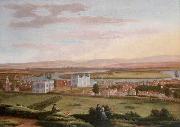 |
Hendrick Danckerts
|
|
(c.1625 - 1680) was a Dutch Golden Age landscape painter and engraver.
Danckerts was born in The Hague, where he learned his trade and remained until 1653.He visited England for the first time in 1650.In 1653 he went to Italy, where he stayed for five years. He then moved to England where he entered the service of Charles II and the Duke of York. He painted Italianate landscapes, especially views of harbors and royal residences. He also produced portraits and devotional pictures and made engravings after the Italian old masters in the Royal Collection. He left England in 1679due to the public hostility towards Roman Catholics after the Popish Plot controversy. He died soon after in Amsterdam. |
|
|
|
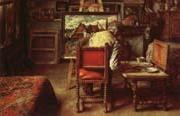 |
Henri De Braekeleer
|
|
Belgian Painter, 1840-1888
Belgian painter, was born at Antwerp. He was trained by his father, a genre painter, and his uncle, Baron Henri Leys, and devoted himself to scenes of everyday Antwerp life. The first pictures he exhibited, The Laundry (Van Cutsem collection, Brussels), and The Coppersmith's Workshop (Vleeshouwer collection, Antwerp), were shown. at the Antwerp exhibition in 1861. He received the gold medal at Brussels in 1872 for The Geographer and The Lesson (both in the Brussels gallery); the gold medal at Vienna in 1873 for The Painter's Studio and Grandmother's Birthday ; and the medal of honor at the Exposition Universelle at Amsterdam for The Pilot House. Among his more notable works are A Shoemaker (1862), A Tailor's Workroom (1863), A Gardener (1864, Antwerp gallery), Interior of a Church (1866), Interior, Flanders (1867), Woman Spinning (1869), Man Reading (1871), Theruedu Serment, Antwerp (1875), A Copperplate Printer, The Sailor's Return, The Man at the Window (Couteaux collection, Brussels), The Horn-blower (Couteaux collection), Man Retouching a Picture (Couteaux collection), The Potters (Marlier collection, Brussels), Staircase in the Hydraulic House at Antwerp (Marlier collection), and The Brewer's House at Antwerp (Marlier collection). The last, better known as A Man Sitting, is generally regarded as his masterpiece. As a lithographer and etcher, his work resembles that of Henri Leys. |
|
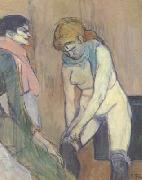 |
Henri de toulouse-lautrec
|
|
1864-1901
French painter and printmaker. He is best known for his portrayals of late 19th-century Parisian life, particularly working-class, cabaret, circus, nightclub and brothel scenes. He was admired then as he is today for his unsentimental evocations of personalities and social mores. While he belonged to no theoretical school, he is sometimes classified as Post-Impressionist. His greatest contemporary impact was his series of 30 posters (1891-1901), |
|
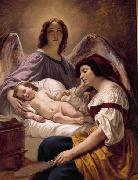 |
Henri Decaisne
|
|
a Belgian historical and portrait painter, was born at Brussels in 1799. As early as 1814 he began to study painting under François, and in 1818 upon the advice of David he went to Paris and entered the studio of Girodet, whence he removed to that of Gros. Several pictures by him are at Versailles; among them are the 'Entry of Charles VII into Rouen' (1838), and the 'Institution of the Order of St. John of Jerusalem' (1842). In 1839 he completed his colossal work, ' Les Belges Illustres.' He died in Paris in 1852. Among his best works are:
|
|
|
|
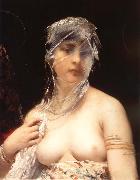 |
Henri Lucien Doucet
|
|
France
1856-1895
was a French figure and portrait painter, born in Paris, where he studied under Lefebvre and Boulanger, and in 1880 won the Prix de Rome. His pictures are usually piquant, sparkling representations of modern life, eminently Parisian in style, but the audacious realism of his earlier work is not maintained in his later, which is somewhat characterless. His portraits in pastel are also notable. His most widely known picture is Apres le bal (After the ball, 1889). Other excellent examples are the portraits of Madame Galli-Marie as Carmen (1884, Marseille Museum); the Princesse Mathilde and My Parents (1890, Lyons Museum); A Spanish Woman (Pontoise Museum); and a Nude Figure (1890). He was awarded a first-class medal for pastel in 1889 and the decoration of the Legion of Honor in 1891. |
|
|

